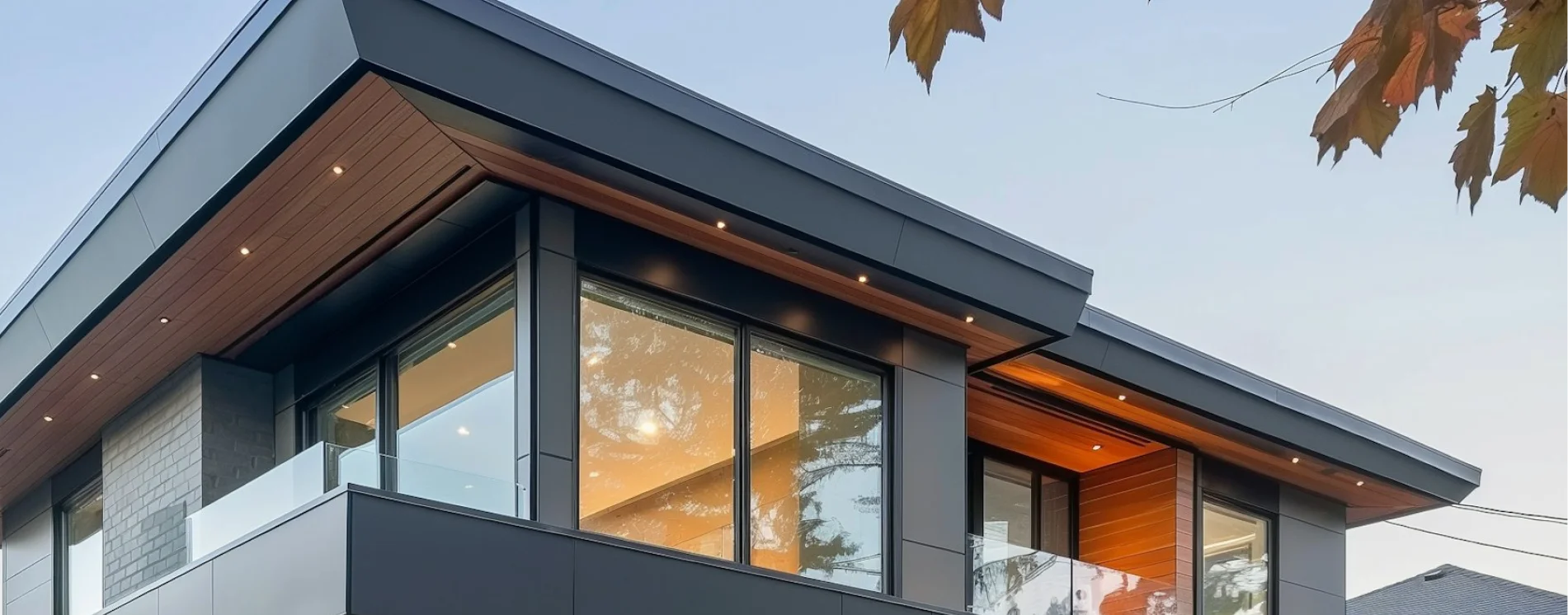


Building a custom home is one of the most significant investments you will make, and the builder you choose will determine the outcome.
A well-chosen builder does more than construct walls; they interpret your vision, manage resources, and deliver a home that balances quality, functionality, and style.
With so many firms to consider, the process can feel complex, but clarity comes from knowing what to look for and what to avoid.
In this article, we outline the essential considerations that will help you select a builder who aligns with your expectations and ensures your custom home is built to the highest standard.
Let’s plunge right in.

Clarity comes first. The more precisely you define what you want, the easier it is to find a builder who can deliver it accurately, price it correctly, and minimise surprises. Good preparation turns vague wish lists into workable briefs that save time, protect the budget, and reduce risk.
Start by writing a clear brief and budget. Describe how you live, the rooms you need, sizes, adjacencies, storage, and accessibility: note style preferences, acoustic needs, and performance targets such as thermal comfort and energy efficiency. Add a simple room list, outline the finishes you expect, and capture any non-negotiable details.
Set a total project budget that includes a contingency, rather than a construction-only figure. Include design fees, surveys, permits, engineering, utilities, site works, landscaping, window furnishings, appliances, and post-handover costs. Add a realistic contingency for unknowns and exclude discretionary upgrades from the base to avoid scope creep later.
Define your timeline, approvals, and decision cadence. Record an ideal move-in date, milestones for design, permits, ordering long-lead items, and key on-site stages.
Note planning dependencies, finance timing, and when you can attend site meetings. Decide how quickly you can approve selections so your builder can keep momentum.
Audit site realities and constraints early. Consider orientation, slope, soil, drainage, access for trucks, neighbouring properties, easements, and service locations. Commission a feature and level survey, as well as a geotechnical report. These details shape foundations, construction method, and program, and they influence which builders are the best fit.
Confirm your specification level and procurement model. State the quality tier for cabinetry, stone, glazing, and fixtures, and your expectations for sustainability and smart home integration. Decide whether you prefer a fixed-price or cost-plus approach, and prepare an inclusion schedule with realistic allowances. This yields comparable quotes and fewer variations.
The strength of your shortlist determines the quality of your final choice. A well-researched pool of builders gives you confidence that whoever you select has the skills, stability, and professionalism to deliver your vision without unnecessary risk.
Begin by looking to credible industry sources. Local home builder associations, architectural networks, and planning authority records provide verified names of licensed and active builders in your area. These lists often distinguish between general contractors and specialist firms, making it easier to match your project type with the right professional.
Next, turn to market visibility and reputation. Review local real estate sections, online directories, and design publications to see which builders are active and the styles they consistently deliver. Attending open homes or industry exhibitions offers a first-hand view of their workmanship, finish quality, and design sensibility.
Leverage personal recommendations and referrals. Real estate agents, architects, and mortgage advisors can identify reliable builders, while friends and family who have recently built can provide candid insights into their experiences. Direct conversations often reveal how a builder handles timelines, budgets, and unexpected challenges.
Finally, conduct a preliminary screening before inviting tenders. Check business registrations, length of operation, and any professional affiliations. Look at online reviews with caution, prioritising detailed feedback over one-line ratings. A builder with a consistent track record of delivery, strong community visibility, and references that align with your project style is more likely to remain on your shortlist.

Behind every strong builder is a disciplined business. Contracts, insurance, and compliance may not seem as exciting as design choices, but they are the safeguards that protect your investment, timeline, and peace of mind.
Start by confirming the builder’s legal and financial foundations. Ask for proof of licences, current registrations, and workers’ compensation and liability insurance. A builder operating with full compliance demonstrates professionalism and shields you from exposure to site accidents or defects that could otherwise become costly.
Examine how the builder structures and manages projects. Clarify who will be your day-to-day contact, how subcontractors are coordinated, and how site safety is monitored. A well-organised firm will have processes for scheduling trades, ordering materials, and resolving issues quickly, which prevents delays from spiralling out of control.
Look at contracts and warranties as a measure of integrity. Professional builders issue detailed contracts that define scope, inclusions, exclusions, and payment milestones. They also offer warranties that extend beyond the completion date, providing reassurance that they stand behind their work in the long term.
Finally, assess their commitment to service and communication. Builders who prioritise transparency will provide clear reporting on progress, budgets, and timelines. They will also establish preferred methods for regular updates, whether through scheduled meetings, site visits, or digital platforms.
A builder’s business practices are not just about paperwork; they are the framework that determines how smoothly your project will run.
The success of your custom home build depends on more than skilled trades and quality materials. Clear contracts, transparent pricing, and structured communication create a framework that keeps a project on track and prevents misunderstandings from escalating into disputes.
Always begin with a comprehensive written contract. This document should clearly define the scope of work, including and excluding specific elements, project timelines, and payment milestones. Without a contract, you have little protection if problems arise. A professional builder will never discourage written agreements and will encourage clarity from the start.
Ensure the pricing structure is transparent. Ask how estimates are calculated, what allowances are included for fixtures and finishes, and whether the contract is fixed-price or cost-plus. Avoid choosing solely based on the lowest figure, as this often leads to cutting corners or incurring costly variations later. Value comes from accuracy and honesty, not discounts.
Establish a realistic payment schedule. Payments should reflect progress and completed stages rather than arbitrary dates. This safeguards your investment while ensuring the builder has the cash flow needed to keep work moving. Be wary of demands for large upfront sums that do not align with industry norms.
Finally, set communication protocols early. Decide how often you will receive updates, whether weekly meetings, digital reports, or scheduled site visits. Define who your primary contact will be, how variations are requested, and how approvals are documented. Clear communication not only keeps you informed but also ensures accountability throughout the entire build process.
A builder’s quote is more than a number; it is a reflection of how well they understand your project, manage costs, and plan for delivery. Comparing quotes with care and negotiating professionally ensures you select value and reliability over short-term savings.
Begin by gathering at least three detailed quotes based on the same drawings, specifications, and inclusions. This creates a fair comparison and prevents the common pitfall of reviewing bids built on different assumptions. A wide price variation often signals missing details or unrealistic allowances.
Focus on value rather than the lowest figure. A cheap quote can mask inadequate materials, rushed workmanship, or hidden extras. A balanced quote that is transparent about costs and contingencies usually provides a stronger indication of the builder’s professionalism and ability to deliver.
When reviewing, look closely at breakdowns and allowances. Check if provisional sums and prime costs are realistic, particularly for kitchens, bathrooms, and finishes. A builder who inflates or minimises these figures may cause disputes later when actual prices differ from the estimate.
In negotiations, focus on scope and upgrades rather than price cuts. Builders are rarely able to reduce costs without compromising quality, but they may include better finishes, longer warranties, or more favourable payment terms. Aim for an agreement that secures fairness for both parties, ensuring trust and collaboration carry through the project.

Past performance is the most reliable predictor of future results. By reviewing a builder’s completed projects and speaking directly with previous clients, you gain insights that no brochure or sales pitch can provide.
Start by requesting references from recent clients and contacting them personally. Ask about the builder’s ability to meet deadlines, handle budgets, and resolve challenges during construction. Direct conversations often reveal how the builder communicates under pressure and whether promises matched reality.
Visit completed homes and ongoing projects whenever possible. Walking through a finished property highlights the quality of finishes, craftsmanship, and attention to detail. Viewing an active site allows you to see how the builder manages trades, maintains safety, and keeps work organised.
Look for consistency in reputation. Builders with long-standing businesses usually demonstrate financial stability and a proven track record. Pay attention to repeat clients or multiple projects within the same community, as these reflect sustained trust.
Finally, cross-check with professional affiliations and reviews. Membership in builder associations or industry bodies shows a commitment to standards and best practice. Online feedback can also provide patterns worth noting, though detailed testimonials carry more weight than simple star ratings. Together, these checks help confirm whether a builder is worthy of your confidence.
Even the most skilled builder cannot succeed without collaboration. A strong working relationship, built on trust, respect, and clear boundaries, is what transforms a contract into a true partnership.
Begin by establishing one point of responsibility. Having a single builder or main contractor accountable for all trades prevents confusion, delays, and disputes. Splitting responsibilities among multiple parties often leads to gaps in coordination and additional stress for the client.
Respect the builder’s role in day-to-day project management. While architects or consultants can provide oversight, the builder should manage schedules, labour, and materials. Allowing them to lead keeps accountability clear and ensures the site runs efficiently.
Be specific and organised in your expectations. Provide precise drawings, inclusion lists, and selections well in advance of construction beginning. Ambiguity creates room for misunderstandings and disputes, particularly when it comes to finishes, fixtures, and the allocation of installation responsibilities.
Finally, foster open communication and mutual respect. Schedule regular meetings, agree on inspection protocols, and prepare a comprehensive snag list at the end of the project rather than raising endless issues. A builder who feels supported and trusted is more likely to go the extra mile, ensuring a smoother experience for both sides.
Choosing the right builder is about more than technical skill; it is about trust, transparency, and a shared commitment to excellence.
At Romaac Group, we bring these values to every project, combining architectural expertise with premium craftsmanship to deliver homes that reflect both vision and lifestyle. As one of the leading custom home builders in Melbourne and across Australia, we offer clients peace of mind that every detail is handled with care.
If you are ready to turn your plans into reality, make an enquiry today because Romaac Group is the partner who will build more than a house; we will build your dream.
It is advisable to obtain at least three detailed quotes based on the same drawings and specifications. This ensures you are comparing like-for-like and highlights whether any builder has overlooked essential elements that could affect cost and delivery.
A strong contract clearly defines scope, inclusions, exclusions, timelines, and payment milestones. It should also outline processes for handling variations or delays. A professional builder will encourage detailed agreements because they protect both client and contractor.
This depends on your project. A reliable general builder can handle most custom homes and coordinate all trades. However, if your build involves complex features such as basements, heritage restoration, or specialist materials, a builder with niche expertise may be a more suitable option.
Look for licences, insurance, and professional memberships, but also check past projects and client references. Speaking directly to former clients provides the clearest insight into a builder’s reliability, communication, and quality of work.


